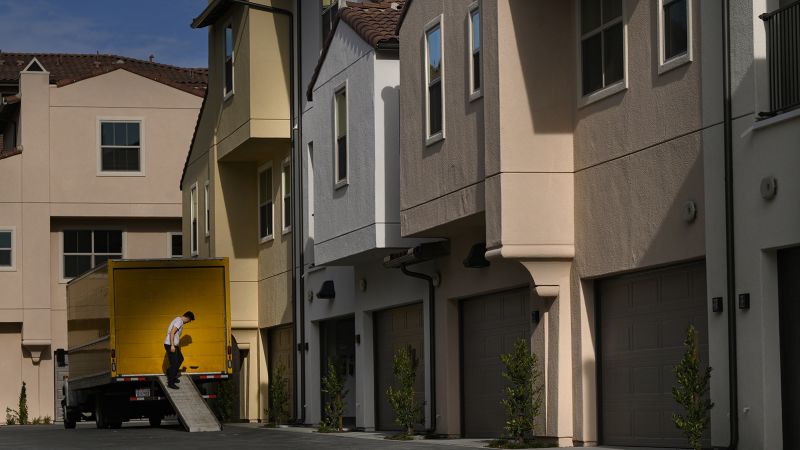The Rise and Fall of the First-Time Homebuyer’s Gap: Evidence from Census Data from a Multi-Agent Market with Anemic Inventory
For most younger Americans, the entree to homeownership, a rite of passage for many adults, has been blocked by forces beyond their control. The market they have been competing in is one that is defined by a large run-up of home prices in modern history and only a steep rise in home mortgage rates. As first-time buyers scramble to cobble together money for down payments and closing costs, they are competing in a market with an anemic inventory against investors and repeat home buyers flush with cash.
The median income for first-time buyers fell to $71,000 during the 12 months ended in June, from $86,500 in the previous year. Meanwhile, repeat buyers had a median income of $96,000, down from $112,500 the previous year.
The time period covered by the research, from July 2021 to June 2022, included some of the steepest home price increases, reaching a peak median home price of $413,800 this past June. Inventory, hampered by decades of underbuilding, was at record low levels, which kept the competition to buy a home frenzied and pushed prices higher. By April of this year, mortgage rates began to surge past the 5% mark. But, after the Fed embarked on a series of interest rate hikes in order to tame inflation, they climbed to as high as 7% by late October. Thursday saw mortgage rates go down slightly.
With mortgage rates double what they were a year ago, more buyers, including Black home buyers, have been pushed out of home ownership. With average rates for a 30-year, fixed-rate loan currently at 6.5%, few renters can currently afford to buy the typical home.
This is likely to exacerbate the racial homeownership gap, in which 72% of White Americans are homeowners while only 43% of Black Americans own a home, according to NAR.
While 17% of White renters can afford to buy the median-priced home, only 9% of Black renters can do so nationwide, NAR estimated, and concluded the homeownership gap between White and Black households will continue to persist.
Homebuyers seemed less interested in buying in the area that they currently reside because of the affordability crunch. The median distance between a buyer’s current home and their newly purchased home was typically 15 miles between 2018 and 2021. The average distance for the year ending in June was 50 miles.
The typical home purchased was 1,800 square feet, had three bedrooms and two bathrooms, and was built in 1986, the NAR report found. That is a smaller and older home than in previous years.
Homeownership and Wealth Generation in the United States, a Study by a Center for Research and Innovation at the University of Maryland, Los Alamos, February 21, 2020
“It feels like it’s never our time,” said Ms. Elmer, 28, who works in private aviation, and had to delay her 2020 wedding because of the pandemic. “I’m stuck at the starting line and other people have been able to progress. I know that we will get there one day but it’s difficult to think about the future.
The more years a person spends renting, the fewer years they have to build equity in a home and eventually pass that equity along to the next generation. A renter is also forever at the mercy of the mercurial rental market, with little control over what their costs will be from one year to the next.
The rate of homeownership in the US has risen since 2015, and is expected to peak in 2021, according to the Census. More Americans own homes than a decade ago, with about 9.2 million more homeowners today than in 2011.
Not all buyers have the same shot at homeownership or its wealth-generating prospects in the United States. The reasons include historical prejudice and redlining practices that continue today. Just this week, the Department of Justice secured a $9 million settlement to resolve allegations that Park National Bank in Ohio engaged in a pattern of mortgage lending discrimination by ‘redlining’ in Columbus, Ohio. Redlining is an illegal practice in which lenders avoid providing credit services to people in specific communities because of the race or national origin of the residents there.
Housing affordability tanked in 2022 as mortgage rates doubled from the year before and home prices hit all-time highs. The report by the NAR states buyers need to earn more than $100,000 per year if they want to buy a median-priced home.
The states with the highest homeownership rate for Black Americans were South Carolina at 55%, Delaware at 54%, and Mississippi at 54%. In contrast, North Dakota (15%), South Dakota (25%) and Alaska (27%) had the lowest homeownership rates.
Almost 25% of homes in high-minority areas experienced undervaluation, while nearly 13.4% of homes in low-minority areas did. The median appraisal value was lower in areas with more minorities, according to a report from the National Association for Real Estate.
